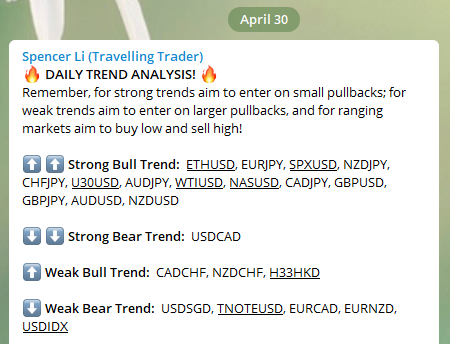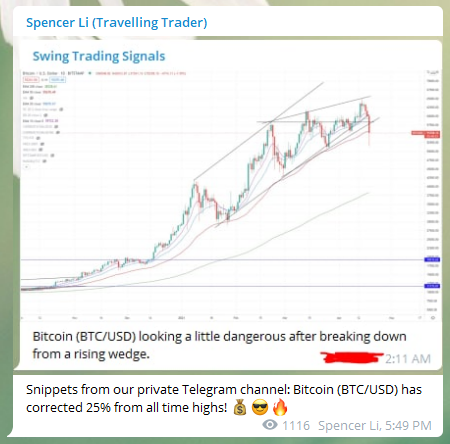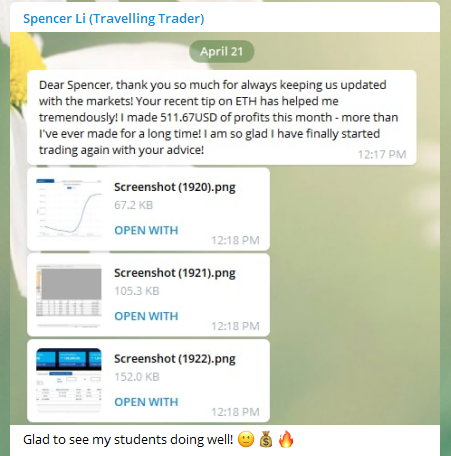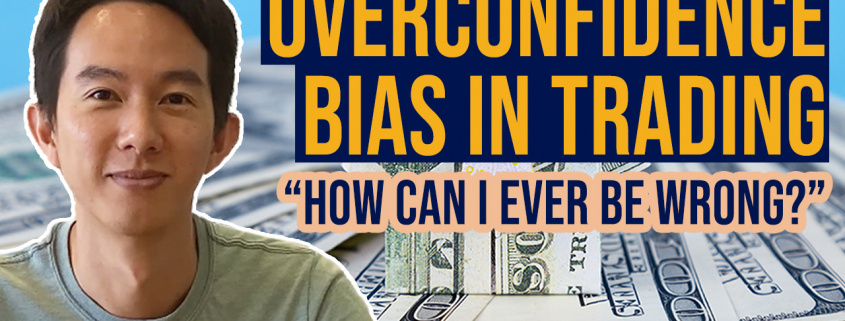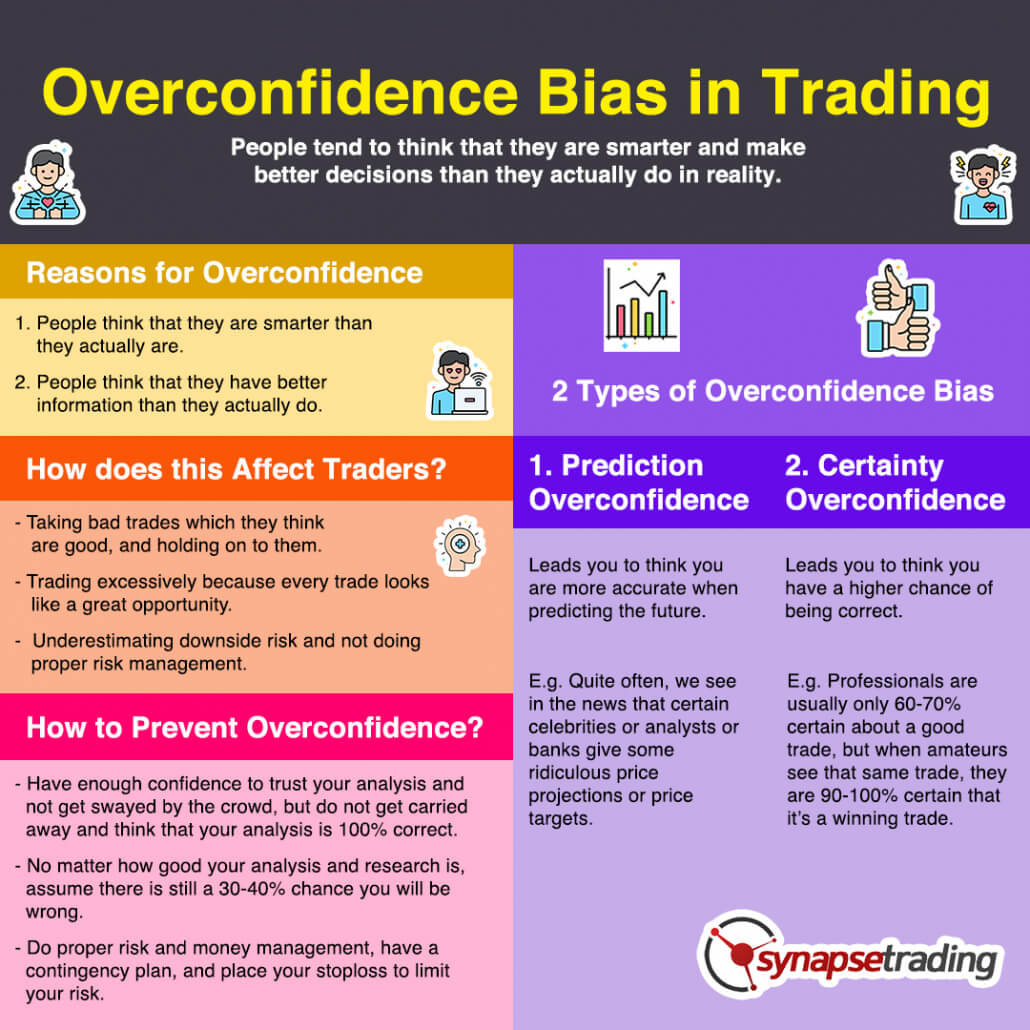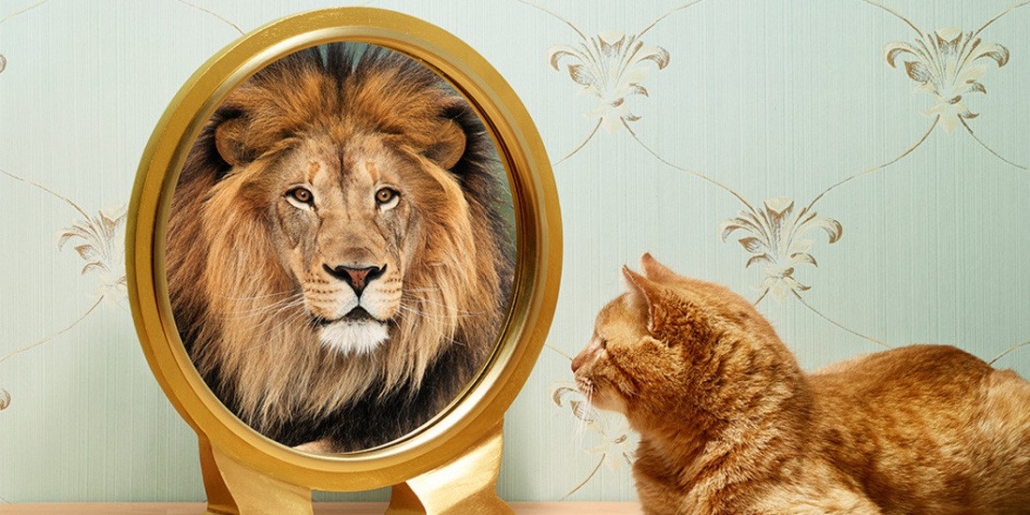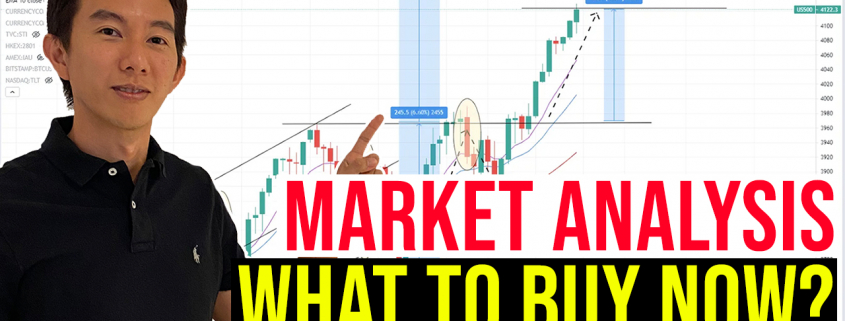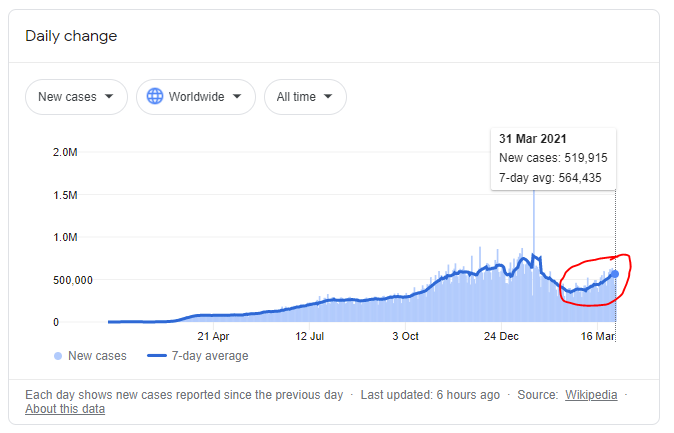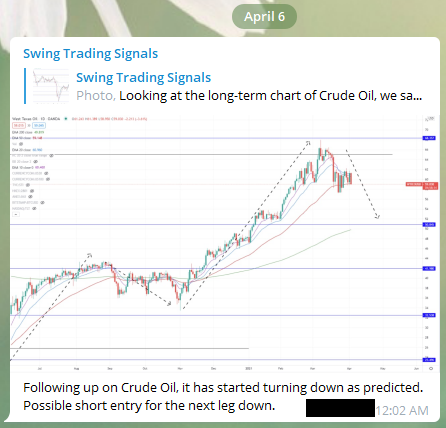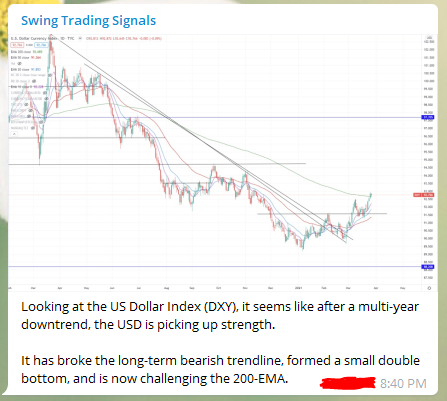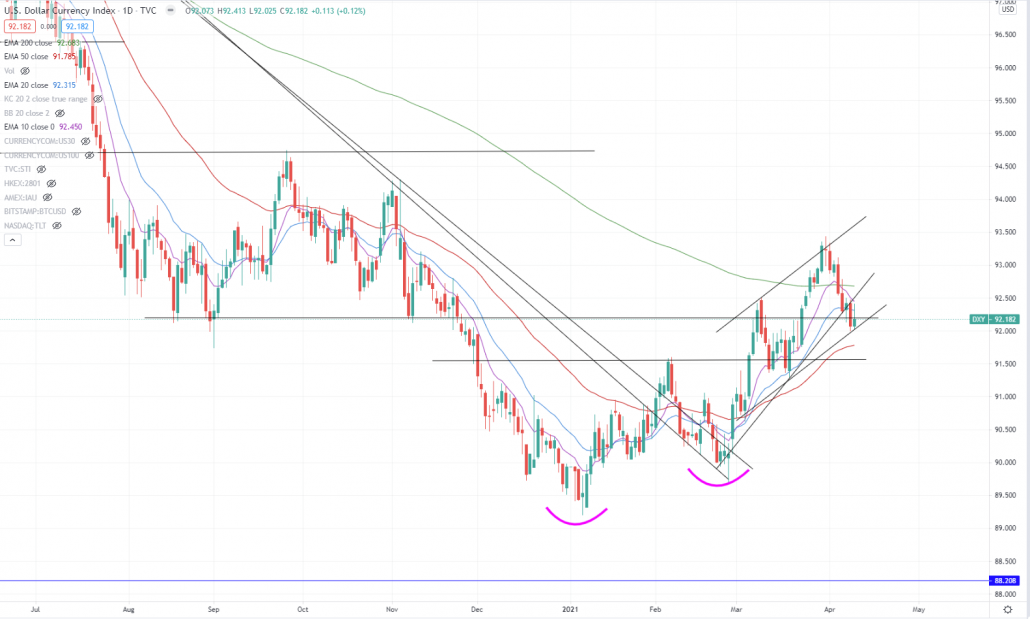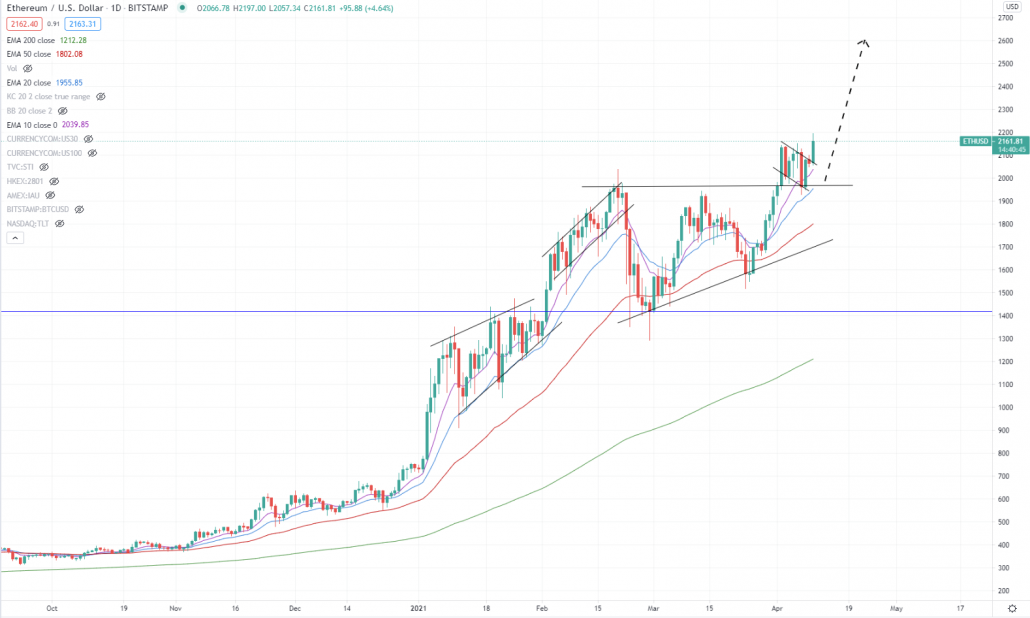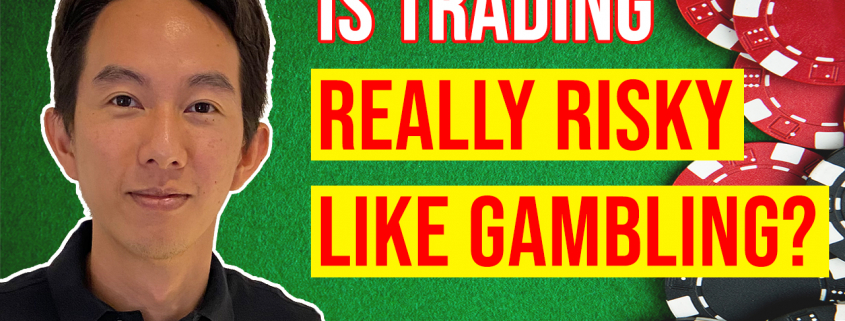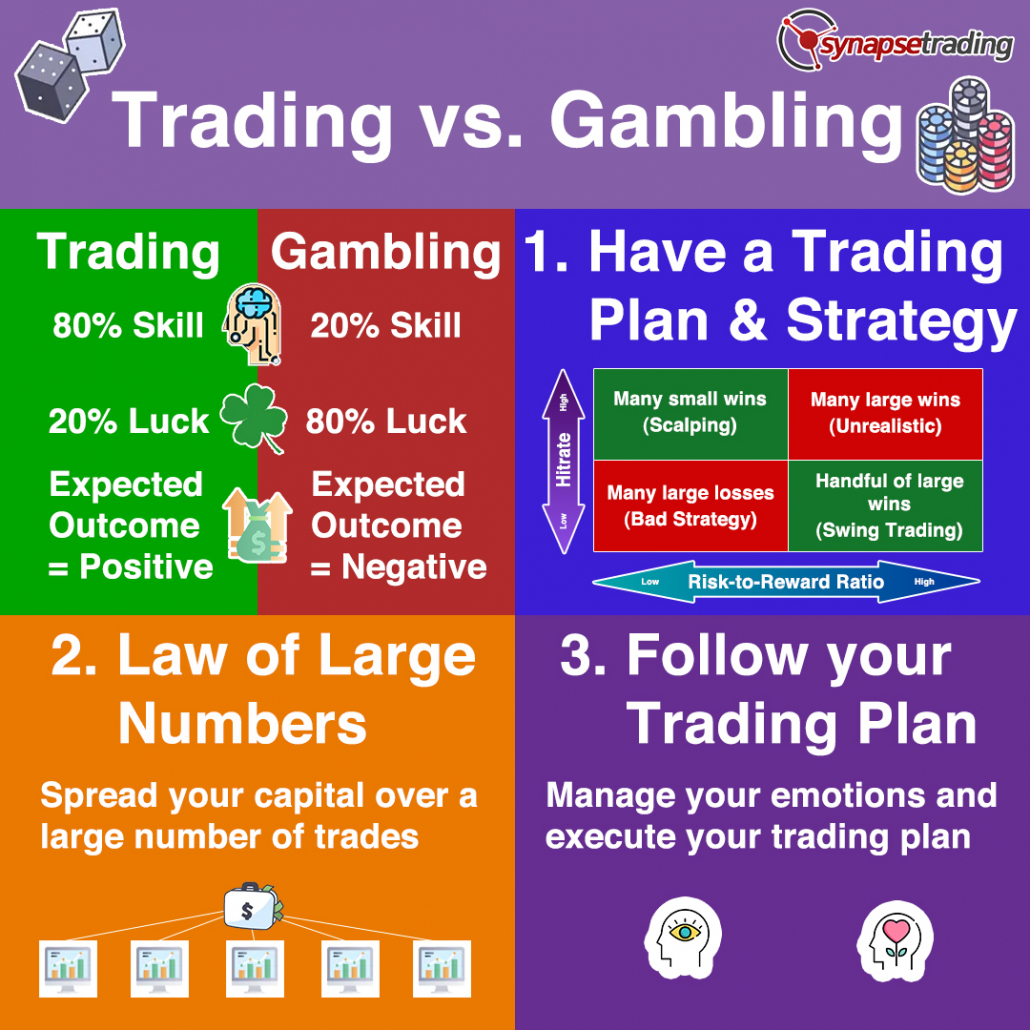Would you pay millions of dollars for digital artwork?
Welcome to the world of NFTs, or non-fungible tokens.
Just this year so far, about $1.3 billion of NFTs have traded through Ethereum network, dwarfing the activity last year.
The biggest transaction was an NFT purchased for $69.3m dollars.
At this point, you might be wondering, what is a NFT, and whether it’s even a real thing.
Sounds unbelievable? Let’s find out more about this hottest new asset class.

What is a NFT? (Non-Fungible Token)
So, what exactly is a NFT, or non-fungible token?
Firstly, to understand what fungible means, let’s look at the concept of normal fiat currency.
If you have a $10 bill, that bill is fungible, because it is completely interchangeable with any other $10 bill. Every bill has the same value, and there is nothing unique about it.
Similarly, cryptocurrencies like Bitcoin are also fungible, meaning 1 Bitcoin (BTC) is interchangeable for any other Bitcoin and has exactly the same value.
On the other hand, NFTs, which rely on special token standards like ERC-721 (using blockchain technology) to ensure uniqueness, are non-interchangeable and each token is unique.
In this way, NFTs are like digital artwork or collectibles because they are one-of-a-kind, and ownership is locked to one particular person (the owner/buyer), making every piece a unique and limited-edition piece of work.
“Think of it like a digital passport that comes with an asset,” said Nadya Ivanova, chief operating officer of BNP Paribas-affiliated research firm L’Atelier. “They allow for this trust and authenticity to be established in a way that we haven’t been able to do before, whether it’s with physical assets or digital assets.”
Now that we have some understanding of “what is a NFT?”, let’s go more in-depth to see how they work.
How do NFTs Work?
What is a NFT token?
Non-fungible tokens are actually cryptographic tokens with unique identification codes and metadata that make them unique.
Created on a smart contract platform such as Ethereum, these tokens are unique and cannot be replicated.
This means that when you buy an NFT, you are essentially buying lines of code on a blockchain.
But these lines of code do have value.
They represent proof of ownership and authenticity of these digital artworks and assets, that this asset you own is uniquely and authentically yours.
This blockchain, which is a type of decentralized record-keeping on a public ledger of blocks, means that the whole world knows who officially owns the NFT.
And because it is decentralized, multiple records are stored all over the place, so it is impossible to hack the network to “steal” ownership of the NFT.
Since an NFT’s uniqueness and ownership can be easily verified, and they ensure strong property rights which cannot be stolen, they can be efficiently traded on the secondary market.
As a result, this new asset class can empower creators, such as artists, developers, in a variety of new ways that weren’t possible before, allowing them to monetise their creations more directly.
The Different Types of NFTs
What are NFT applications?
Back in 2017, we saw the first NFTs in projects such as CryptoPunks and CryptoKitties, where blockchain technology was used to sell online collectibles.
Since then, the industry has bloomed into a wide variety of new use cases and industries, with a market exceeding $1b dollars.
Non-fungible tokens can be used to tokenize just about anything, and so far some of the most popular NFT use cases have been:
- Gaming assets (Axie Infinity, Gods Unchained, Sorare)
- Attendance receipts / Event tickets
- Subscription badges
- Digital art (Async Art, Rarible, SuperRare)
- Blockchain domain names (Unstoppable Domains, Ethereum Name Service)
- Tokenized insurance policies (yEarn’s yInsure tokens)
- Tokenized luxury goods, e.g. wine
- Digital music (Mintbase, InfiNFT)
- Virtual real estate (Cryptovoxels, Decentraland)
- VR wearables

Samples of Most Expensive NFTs Sold
Here are some recent samples of NFT artworks and related products that have been sold, proving that this is a potential multi-billion dollar or trillion-dollar market.
- NBA’s Top Shot NFT-based trading card system – $230m in sales
- “Everydays: The First 5,000 Days” by Beeple – $69.3m
- CryptoPunks #7804 and #3100 – $7.6m each
- CROSSROAD by Beeple – $6.66m
- Collection of 10 digital artworks by Grimes – $6m
- First Tweet by Jack Dorsey – $2.5m
- Exclusive NFT version of their latest album by Kings of Leon – $2m
- CryptoPunk #6965 – $1.54m
- Auction Winner Picks Name by SSX3LAU – $1.33m
- Not Forgotten, But Gone by WhIsBe – $1m
- Hairy by Steve Aoki – $888,888.88
- THE COMPLETE MF COLLECTION by Beeple – $777,777.77
- Nyan Cat by Chris – $590k
The founder of Twitter, Jack Dorsey, recently auctioned his first tweet ever on the Twitter platform to raise money for charity.
The tweet, which said “just setting up my twttr,” was first published on March 21, 2006 and was sold for $2.9m.

What is a NFT Artwork? Is it a Scam?
So, what is a NFT artwork and how it is different from normal artwork?
When you buy a non-fungible token, what you are getting is a unique cryptocurrency token on the blockchain.
Some NFTs have only one version, so it is like owning the authentic version of a famous artwork such as the Mona Lisa.
However, things can get a little confusing here.
Because there are also NFTs which are digital versions of the reprints, kind of what you see in Pokemon cards where each card is printed multiple times.
But for each NFT, there is still a unique “watermark”, which is the code, so if yours is the original or limited edition, then the property rights or IP of the digital asset belongs to you.
For example, the “Nyan Cat” meme is freely available to anyone who wants to download a copy of it, but none of these downloads are the ‘real’ Nyan Cat NFT worth 300 ETH.
In the jargon of the art world, the difference is like owning an original versus owning a replica.
In the art world, one of the biggest problems is fake artworks.
However, because of blockchain technology, it is impossible to sell “fakes” of NFTs, because anyone can easily check the online public ledger to see who owns the real original NFT.
So in a sense, it is actually safer than physical artworks.
How Much is an NFT Worth? What Are the Risks?
How much should you pay for an NFT, or how much should you sell one for?
Just like dealing in valuable art pieces or collectibles, this answer is tricky because the value is totally dependent on supply and demand.
An art piece or collectible is only worth as much as what the next person is willing to buy it for.
So using that as a benchmark, you want to look out for things like artist reputation, scarcity, and provenance, including the origin and past transactions.
You can try to benchmark it against other similar pieces by the same artist, or other products in the same genre, but at the end of the day, the worth is determined by the market.
Hence, you want to make sure there is still interest and other buyers for your NFT, should and when you decide to sell it in the future.
The biggest risk is that should the NFT craze turn out to be a bubble, kind of like a game of “pass the bomb”, then you don’t want to be the fool left a bunch of worthless NFTs which you paid a lot for.
Since this is still the early phase, the risk of this is less, but the risk of a potential bubble increases if prices for popular NFTs keep increasing exponentially, akin to the Tulip Mania.
Another risk is that because NFTs are transacted in cryptocurrencies (ETH), the prices of NFT are very likely tied to the price fluctuations of cryptocurrencies.
So if you have noticed, there are sort of 2 different segments of NFTs. One is the super expensive NFTs of rare digital artworks or collectibles, while the other is the more “down-to-Earth” retail market for common folks to sell or access useful products and services.
For the former, just like the market for valuable artworks and collectibles, I feel that it is somewhat of a playground for rich investors to speculate, and not really meant for the typical retail investor.
How to Create & Mint NFTs
However, even though you don’t have millions of dollars to speculate on non-fungible tokens, you can still take advantage of this trend by creating and selling your own NFTs.
If you have already tried uploading photos or videos on social media platforms like Facebook, Instagram, or Tik Tok, then you already know how to create “digital artwork”.
The difference is that after creating your artwork, there is one extra step called “minting” to turn your creation into an official NFT.
To do that, you can use one of the many NFT minting platforms around the Ethereum ecosystem. Each has its own pros and cons, and different fees.
DIY (do-it-yourself) minting platforms like OpenSea, Rarible, InfiNFT, Mintbase, and Cargo let creators easily and permissionlessly mint their own NFTs.
On the higher end, there are some exclusive membership-only NFT minting platforms to which creators have to apply and be accepted before they can mint through these platforms, such as SuperRare and Async Art.
Once you have decided on your platform, you will need to upload your artwork, fill in a description, and decide whether you want to create a standalone or edition-based piece, your asset’s royalty percentage, unlockable content, etc.
Finally, you will need to make payment via ETH (Ethereum) for the approval and minting process to commence.
How to Buy and Sell Non-Fungible Tokens (NFTs)
Now that you have created your own non-fungible token, the next step is to find a marketplace to sell it.
You might be wondering, what is a NFT marketplace?
Thankfully, there is already such ecosystem set up, with open marketplace platforms like OpenSea, Nifty Gateway (art), Decentralland, Enjin (games), Yellowheart (concert tickets), NBA Top Shot (NBA collectibles), SuperRare (art) and Rarible where you can list your NFTs for sale easily, depending on which category your NFT falls under.
Payments are done via Ethereum (ETH) as well, so you will need to connect your wallet to the platform, in order to buy or sell any NFTs.
Criticism of NFTs
What are some of the current drawbacks of this non-fungible tokens system?
High Transaction Fees (Ethereum Gas Price)
If you recall in the previous segments when we talked about minting, buying and selling NFTs, there were transaction fees involved.
One problem is that these transactions fees can be quite high.
As most NFTs are on the Ethereum blockchain platform, each transaction requires the payment of Gas: the fee charged for processing a transaction or contract on the Ethereum blockchain network.
This fee is denominated in gwei: a small fraction of ETH.
Hopefully, as the market matures, and more competition comes in, the fees for these transaction costs will fall as well.
Environmental Impact
Currently, Ethereum still operates on the “Proof of Work” architecture that requires mining, which consumes a large amount of electricity and leaves a large carbon footprint.
To put this into context, the amount of electricity that the Ethereum network consumes rivals that of countries like Ecuador with a population of about 17.4 million.
Since almost all NFT transactions involve ETH, this will undoubtedly contribute to the usage of the network and electrical consumption.
Hopefully, Ethereum will be transitioning to a more eco-friendly “Proof of Stake architecture” soon, although progress has been slow since this idea was first put forth years ago.
Concluding Thoughts on NFTs
Currently, the NFT transactions attracting all the hype are the super expensive transactions similar to valuable artworks or rare collectibles.
While these garner the headlines, the more relevant applications NFTs could lie in empowering independent creators such as artists and developers to directly monetise their creations.
The huge potential also lies in the myriad of products and services which businesses (both small and large) can create or tie-in with their existing offerings in the offline world.
This means that in a couple of years, many of these products and services could become commonplace in our lives, unlocking a trillion-dollar market opportunity.
Now that I have shared all you need to know about NFTs, what do you think of this new asset class? Is it a bubble or is it here to stay? And if someone asks you “what is a NFT?”, will you be able to explain it to them?
Let me know in the comments below!



